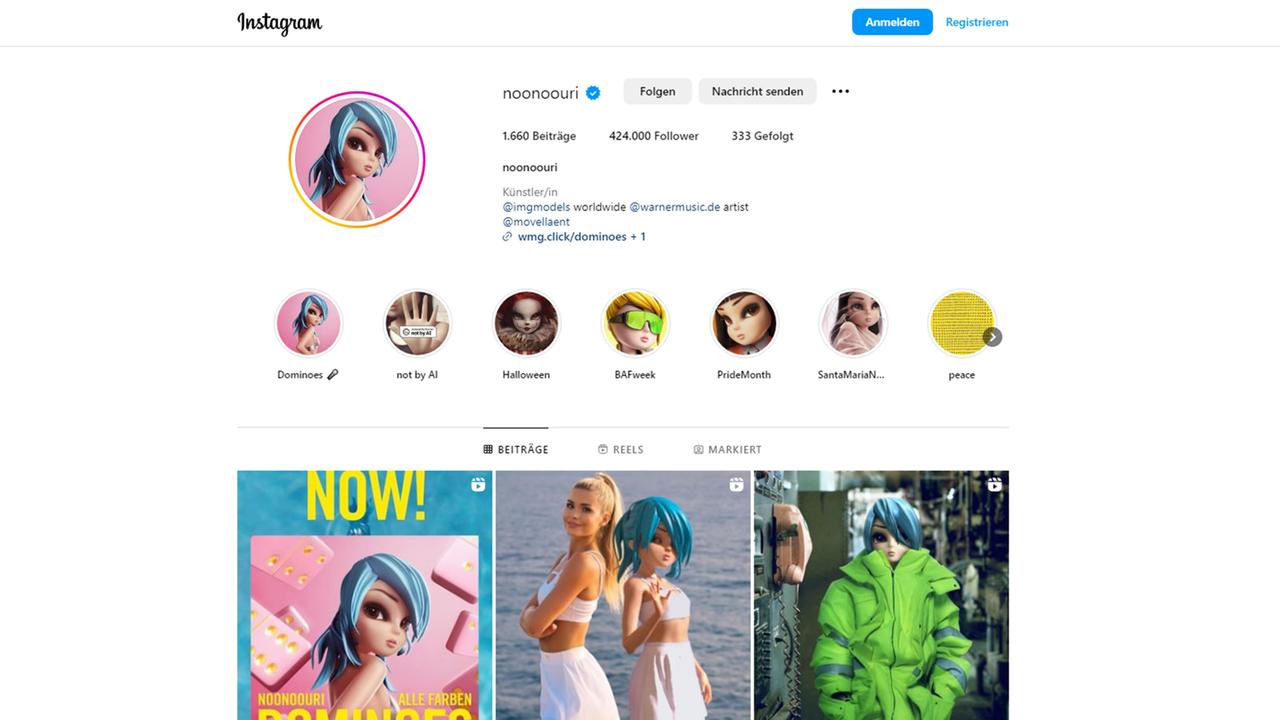They travel around the world, advertise products and talk about their everyday lives – even though they are not human. Virtual influencers are conquering Instagram and TikTok. The strange trend is fascinating, but also raises questions.
Like most people her age, Isabella Mai is on social networks every day. Influencers have become everyday companions for them.
Almost two years ago, the 24-year-old discovered so-called virtual influencers: computer-generated avatars with their own social media profiles. “I used to watch anime and play video games. When I started using social media, I got more and more into it,” says Mai.
Interest is increasing
The relevance of virtual influencers has increased massively in recent years. Originally known from the gamer and science fiction scene, they are now on TikTok and Instagram.
More and more people – especially in Asia, South America and the USA – are following them. “In Germany and Europe, virtual influencers are still a niche, but their number of followers is also increasing here,” explains Claudia Franke from Saarland University. This is, among other things, because they are new and contemporary. This attracts the attention of users.
“For me it was just pure interest and pure fascination,” says Isabella Mai. “I’m interested in the content and also what’s technically behind it – how these characters are created.”
Traveling digitally to the world’s fashion shows
Like their human role models, virtual influencers inform and report on topics in which they specialize or provide insights into their supposedly “real” lives. So does noonoouri. With over 420,000 followers on Instagram, she is the most successful German figure.
She has been attending fashion shows around the world since 2018 – digitally, of course. As a virtual model, she has since worked with brands such as Dior, Valentino and Lacoste. For its creator, the Munich graphic designer Jörg Zuber, noonoouri is more than just a fashion doll.
Figure from the creator’s childhood
“I was very introverted as a child. And then I thought to myself: If I had a person, a best friend, that I could connect with, that would help me,” says Zuber. This is how noonouri was created on drawing paper when he was five years old. With technical developments, he was able to bring it to life digitally twelve years ago.
There is a lot of Jörg Zuber in noonoouri. Using sensors and face tracking, his movements are digitized and transferred to the avatar and adapted. He also gave noonoouri a voice for a collaboration with the German DJ and music producer Alle Farben and the music label Warner Music.
Boundaries between reality and the virtual world are blurring
“noonoouri’s voice was developed especially for the music video. Although it is AI-supported, it was not generated solely with artificial intelligence,” says Zuber.
But not all virtual influencers can do without artificial intelligence (AI). Computer-generated imagery (CGI) is used to create digital people that look and behave like real people. That’s the case with lilmiquela, who is one of the most successful virtual influencers with 2.7 million followers.
With her and other avatars, the boundaries between reality and the virtual world are becoming increasingly blurred, and it is becoming increasingly difficult to recognize what is actually real about it.
Lack of rules for transparency
However, not all accounts indicate that the figures are digitally created. Scientist Franke finds this problematic: “We tested whether people could tell the difference between real and virtual influencers. Almost half couldn’t unless they were labeled accordingly. The profiles without labels were also perceived as scarier.”
The lack of transparency about the technologies used is not yet regulated in Germany. In France there will soon be a legal regulation for more transparency in the advertising business on social media.
Brands are recognizing the trend
Many companies are now jumping on the virtual influencer bandwagon. “There are many advantages for brands. For example, customizability. The influencer can be created with one click just as the campaign or the brand wants,” says Franke.
But there is also greater control and flexibility. Another argument: collaborations with virtual influencers are cheaper. For these reasons, more and more companies are already developing their own avatars.
Jörg Zuber adds one aspect: “Things happen that you can’t do with real people. You can put the figure on Mars and then immediately position it underwater.”
Art characters – whether people or avatars
Virtual influencers, whether close to reality or far from reality, are fictional characters. They only exist in the digital world. And even if it is technically possible, it still cannot be done without people.
“We assume that the era of virtual influencers is still ahead, but they will not be able to replace real people,” says researcher Franke.
But with artificial intelligence it is becoming increasingly easier to develop it. However, the short and medium-term consequences for society are currently difficult to estimate.




